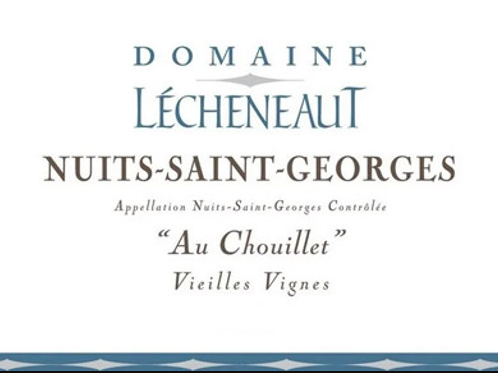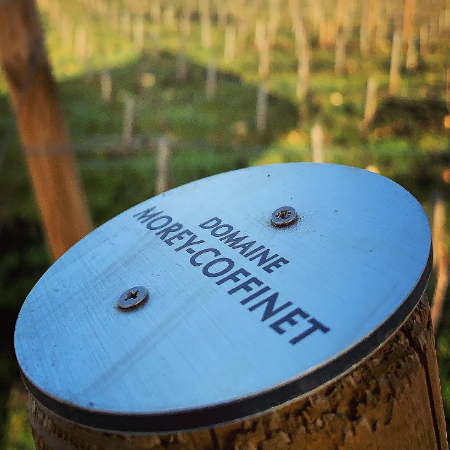It seems that interest in Burgundy is about to reach fever pitch as the 2015s are released onto the market across late December and early January. From the moment the fruit was harvested, there has been plenty of comment on this widely acclaimed red Burgundy vintage which has – if anything – been heightened by the backdrop of a significantly trickier and more challenging 2016 vintage. To be clear, quality in 2015 is undeniably excellent (notably so for Pinot Noir), but volumes are down once more and, combined with considerable attention from the press and likely lofty scores from critics, we suspect this will result in somewhat of a mad scramble for allocations.
The style of 2015
Tasting young red Burgundy from barrel in the region as we did in late October has never been such an enjoyable task. In part, this was due to the wonderfully appealing fruit characters that the wines exhibited and their undeniable concentration. The reds have terrific dark colours, plentiful fruit and are as smooth – almost suave in texture – as they are lavish and exuberant in mouthfeel. This is a seductively-styled vintage, with an amply veiled structure that will provide the opportunity for considerable longevity. Certainly, such a fine balance between opulence and structure has not been witnessed in many a year. 2015 does not show the excesses of a hot vintage that were in evidence in a number of 2003s and a handful of 2009s; the key here is the poise that the best 2015s show. Some may allude to the density and sheer weight of the 2005s, but even that vintage was perhaps obviously assertive. The 2015s possess smoother-edged tannins, but with the same sensation of fruit sweetness and intensity of flavor, a character described as ‘soyeux’ (‘silken’) by Christophe Perrot-Minot. It is this admirable texture and uncommon poise that will delight those who broach this vintage in time.
As to the whites, they are certainly more luscious than the 2014s, with honeyed citrus notes and plenty of juicy stone fruit and ripe orchard fruit characters. Striking poise was perhaps more challenging with Chardonnay, as the ripeness that is evident is coupled with a lower sense of acidity. Those who picked late have lost freshness in the resultant wines. The more successful white Burgundy of 2015 may take a little time for vineyard character traits to assert themselves. Currently, the wines are rich in fruit and share the exuberance you would associate with a warm vintage. What is clear is that there were comparatively few whites that seemed in any way surmature(overripe) and therefore it is likely to be fascinating to watch their progression in bottle. Indeed, the energy apparent in the best of 2015 might well surprise in time. Certainly, it is clear that the 2015s will be able to be broached early in their life or cellared over the mid-term. In terms of vintage comparisons, 2015 is a more concentrated, focused vintage than 2009 and does not reveal the more unpredictable nature of 2003. It seems that consensus is starting to settle on 2005 as a comparable vintage, but time will tell.
The growing season
The growing season in 2015 was just short of ideal. Winter and spring were relatively mild overall, with budbreak in some areas affected by hail. Some millerandage (where grapes in a bunch differ greatly in size, with some immature berries throughout the bunch) was reported as a result of dry weather, which is comparatively unusual as this is often related to inclement weather during flowering.
May and June were accompanied by a threat of mildew from light rains, but this was quickly and easily treated by conscientious growers. Generally, rainfall was low during the growing season and July was particularly warm, with temperatures over 35 degrees Celsius. Several growers in Morey-Saint-Denis reported that sites such as La Riotte fared well given water retentive clay soils. Growers with older vines also benefitted from the tendency for these vines to have deeper root systems, allowing the vine to access precious water reserves. Fortunately, some rains arrived in August and so hydric stress in the vineyards was generally not an issue. Equally, temperatures cooled a touch in early August, easing the pace of ripeness, only for it to pick up again at the end of month.
The harvest began a touch early, at the end of August for many white wine producers. Domaines Javillier and Lamy, for example, reported maturity levels of the grapes similar to 2003, 2005, 2009 but without the extreme stress to the vines. Likewise, our Côtes de Nuits producers pointed out that the cooler night-time temperatures (in contrast to this trio of warm vintages) helped to preserve aromatics and a greater freshness in the 2015s.
In general, the harvest was comparatively straight-forward given that it was carried out in fine weather. Millerandage early in the season meant a slightly smaller yield, but equally greater concentration, particularly in tannin. Excellent conditions overall mean that in general, growers had impeccably pure fruit, with healthy skins. As long as the picking date was well-judged, they succeeded in retaining freshness and poise.
Production volumes are down by around 10-20%, partly due to hail in the springtime and partly due to the inconsistent berry size. The bedeviled area of northern Côte de Beaune, home to Volnay and Pommard, was particularly badly hit by hail with crop losses as high as 50% in some instances.
A note of caution
These comments aside, it is worth stressing that 2015 is not as homogenous a vintage as it may be portrayed. Our selection process for this offer is strict and several visits to new growers highlighted pitfalls. Wines from those who were not sufficiently attentive in the vineyard – in a year where ripeness could escalate quickly – show almost grilled notes from sunburnt grapes. The key here was managing the leaf canopy to provide some shade and respite to the fruit. Equally, overripe fruit characters were found where grapes were left on the vine too long. This is invariably accompanied by a certain bitterness from over-extraction. In some reds, fruit was harvested when the berries were ripe, as judged by sugar accumulation, but not when it was physiologically ripe; when the tannins in the skins, pips and stems had ripened. As always, there were significant judgement calls, but perhaps that outcome of such decisions was more apparent in 2015.
Pricing
The pricing scenario for the 2015s is complex; a number of factors have combined that will translate to significant increases of 2014 for UK buyers. Firstly, yields are down in 2015 and the backdrop of a tough 2016 vintage which saw the harshest April frost seen in Burgundy for decades has encouraged growers to aggregate across the two vintages. The spring frosts of 2016 killed off young buds and decimated the crop in areas of the Côte d’Or. In recent years, parts of Côte de Beaune have been hit by hail more frequently than before. In 2016 a wider range of Grand and Premier Cru vineyards were devastated, to the extent that no wine was made from Domaine Méo-Camuzet’s Chambolle-Musigny Les Cras, to name but one example. The economic challenges are significant and, given the extreme quality of the best red Burgundy in 2015, growers believe that price increases are justified. Subsequently, this has led to a 10-15% price increase from growers at source, with a few rumoured to elevate their prices beyond this bracket.
If we then factor in Year-on-Year differences in exchange rates, this translates to an increase of 30% or above to the consumer.
Final comments
Leaving price increases and reduced volumes aside, it is clear that Burgundy continues to command a loyal and avid following in the market. This is only likely to be heightened by the clamour to secure 2015s in late December and early January. The quality of the 2015s is such that it is near impossible to think that global collectors will not buy into this vintage aggressively. Allocations will naturally be tight for the leading wines of the vintage. This is just as it should be on account of that richness of fruit, texture and poise, which is showcased from ‘villages’ level all the way up to Grand Cru – a sure sign of favourable vintage conditions.
It is always taxing to secure wines from new domaines for any Burgundy offer, but even more so in a high demand vintage like 2015. With this offer, we are delighted to be adding wines from Domaines Francois Bertheau, Denis Mortet and Hudelot-Noellat to complement the range of domains we represent.
Victoria Stephens Clarkson MW
Head of Buying



